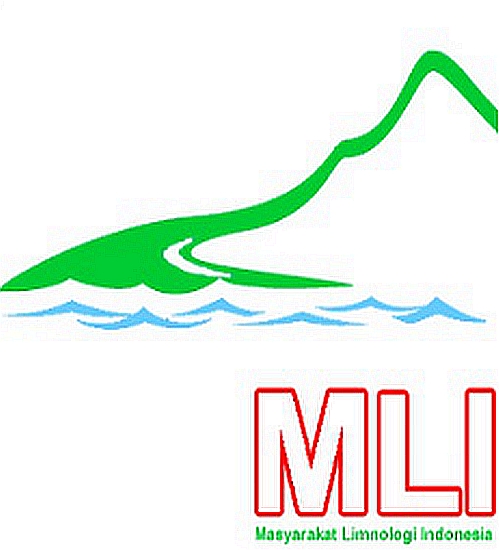POTENSI PRODUKSI DAN KEBUTUHAN BENIH UNTUK PENGEMBANGAN PERIKANAN TANGKAP DI EMBUNG NUSA TENGGARA TIMUR
Abstract
Keywords
Full Text:
PDFReferences
Aqil DI, Putri LSE, Lukman. 2013. Pemanfaatan plankton sebagai sumber makanan ikan bandeng di Waduk Ir. H. Djuanda, Jawa Barat. Al-Kauniyah Jurnal Biologi 6(1): 13-25
Bramick U. 2002. Estimation of the fish yield potential of lake in noerth-east Germany. Edited by Cowx I.G. Management and Ecology of lake and reservoir fisheries. 26 – 33.
Cowx IG. 1994. Stocking strategy. Fisheries management and ecology 1: 15-30
Dillon PJ, Rigler FH. 1974. A test of a simple nutrient budget model predicting the phosphorus concentration in lake water. J. Fish. Res. Board Can. 3l:1771-177
Henderson HF & Welcomme RL. 1974. The relationship of yield to morphoedaphic index and number of fisherman in Africa inland waters. Comminte for Inland Fisheries in Africa, Occas Pap 1: 19
Janjua MY, Ahmad T, Gerdeaux D. 2008. Comparison of different models for estimating fish yield in Shahpur Dam, Pakistan. Lake & Reservoirs: Research and Management 13: 319-324
Jones RA, Lee GF. 1982. Review: recent advances in assessing impact of phosphorus loads on eutrophication on eutrophication related water quality. Water Research 16: 503-515.
King M. 1995. Fisheries biology: Asessment and management. Blackwell Science Ltd. London: 341
Kartamihardja ES. 2007. Spektra ukuran biomassa plankton dan potensi pemanfaatannya bagi komunitas ikan di zona limnetik Waduk Ir. Djuanda, Jawa Barat. Disertasi, Sekolah Pascasarjana IPB. 165
Kartamihardja ES, Umar C. 2009. Kebijakkan pemacuan sumberdaya ikan di perairan umum daratan Indonesia: Teknologi alternatif untuk meningkatkan produksi ikan pendapatan nelayan. Jurnal Kebijakan Perikanan Indonesia 1(2): 99-111
Krismono. 1989. Komunitas ikan di Waduk Jatiluhur selama 5 tahun (1982-1986). Bull. Penel. Perik. Darat 8(2): 40-49
Melack JM. 1976. Primary productiviy and fish yield in ropical lakes. Trans Am. Fish. Soc 105: 575-580.
Moreau J, De Silva SS. 1991. Predictive fish yield models for lakes and reservoirs of the Philipines, Sri Lanka and Thailand. FAO Fish. Tech. Pap. 319. 42
Nguyen HS, Bui AT, Nguyen DQ, Truong DQ, De Silva SS. 2005. Cultured-based fisheries in small reservoirs in north Vietnam: effect stocking density and species combination. Aquaculture Research 36: 1037-1048
Offem BO, Akegbejo-Samsons Y, Omoniyi IT. 2007. Biological assessment of Oreochromis niloticus (Pisces: Cichlidae; Linne, 1958) in a tropical floodplain river. African Journal of Biotechnology 6 (16): 1966-1971.
Oglesby RT. 1977. Relationship of fish yield to lake phytoplankton standing corp, production, and morphoedaphic factor. J. Fis. Res. Board Can 34: 2271-2279
Otieno ON, Kitaka N, Njiru JM. 2014. Some aspects of the feeding ecology of Nile Tilapia, Oreochromis niloticus in Lake Naivasha, Kenya. International Journal of Fisheries and Aquatic Studies 2(2): 1-8
Pickering T, Tanaka H, Senikau A. 2013. Capture-based aquaculture of milkfish Chanos chanos in the Pacific Islands. Proceedings of Regional Workshop at Vitawa Village, Fiji Islands. Fiji Island: 60p
Phan PD, De Silva SS. 2000. The fishery of the Ea Kao reservoir, southern Vietnam: a fishery based on combination of stock and recapture, and self-recruiting populatios. Fisheries Management and Ecology 7: 251-264
Phusphalatha KBC, Chandrasoma J. 2010. Culture-Based fisheriesin minor perennial reservoir in Sri Lanka: variable production, stocked species and yield implications. J. Appl. Ichthyol 26: 99-104
Quiros R, Mari A. 1999. Factor contributing to the outcome of stocking programmes in Cuba reservoirs. Fisheries Management and Ecology 5: 241-254
Rahardjo MF, Kartamihardja ES, Utomo AD. 2007. Identifikasi dan karakterisasi potensi perikanan perairan umum daratan. Prosiding Forum Perairan Umum Indonesia Ke – 3. Pusat Riset Perikanan Tangkap. 1-17.
Rawson DS. 1952. Mean depth and fish production of large. Ecology 33(4): 513-521
Ryders R.. 1965. A method for estimationg the potenstial fish production of North-temperate lakes. Tras.am.Fish.Soc. 84:154-164
Schlesinger DA, Regier HA. 1982. Climatic and morphoedaphic indices of fish yield from natural lakes. Transactions of the American Fisheries Society, 111:141-150
Sondergaard M, Jensen JP, Jeppesen E. 2003. Role of sediment and internal loading of phosphorus in shallow lakes. Hydrobiologia 506-509: 135-145.
Smith VH, Tilman GD, Nekola JC. 1999. Eutrophication: impact of excess nutrient input on freshwater, marine, and terrestrial ecosystems. Environmental Pollution 100: 179-196
Sugunan VV, Mandal SK, Krishna Rao DS. 2002. Fish yield prediction through morpho-edaphic index and estimation of stcoking density for stocking density for Indian reservoirs. Indian J. Fish 49(4): 369-378
Sugunan VV, Katiha PK. 2004. Impact of stocking on yield in small reservoirs in Andhra Pradesh, India. Fisheries Management and Ecology 11: 65-69
Sulastri, Harsono E, Suryono T, Ridwansyah I. 2008. Relationship of land use, water quality anad phytoplankton community of some small lakes in West Java. Oseanologi dan Limnologi di Indonesia 34(2): 307-332
Welcomme RL, Bartley DM. 1998. An evaluation of present techniques for the enhancement of fisheries. In Petr T (edt). Inland fishery enhancement. FAO Technical Paper 374: Rome, Italy: 463
Welcomme RL. 2001. Inland Fisheries Ecology and management. Blackwell Science. United States of America. 358p
Wetzel RG. 2001. Limnology Lake and River Ecosystem. Academic Press. United States of America. 1006p
DOI: http://dx.doi.org/10.14203/limnotek.v25i2.226
Refbacks
- There are currently no refbacks.
PUBLISHED IN COLLABORATION WITH

Copyright © 2015-2018, LIMNOTEK. All Rights Reserved. Powered by OJS.





